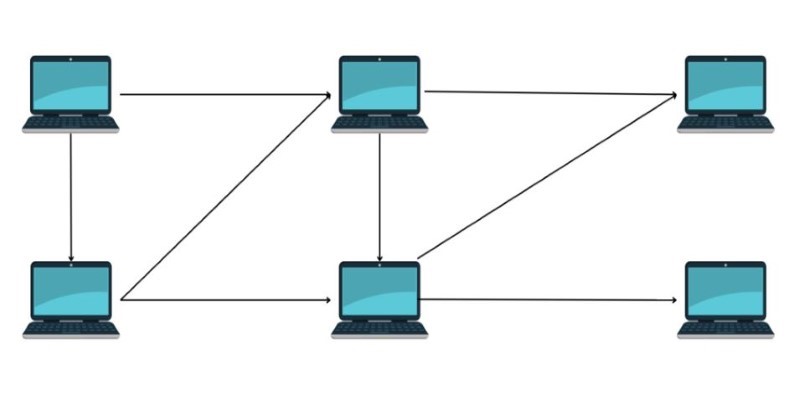Artificial intelligence (AI) has become an integral part of our lives, influencing how we work, communicate, and even think about the future. Whether it’s through smart assistants like Siri and Alexa or recommendation engines that suggest what to watch next, AI touches nearly every aspect of modern living. However, AI isn’t a monolithic entity—it comprises several distinct types, each with unique capabilities and functions.
From the simplest reacting machines to really complex self-conscious systems, in many ways almost purely theoretical today, AI could be classified depending on how a machine learns or interacts with the surroundings. Herein, we consider 7 critical types of AI and the differing categories with light on what each indicates for the near future of tech.
The 7 Types of Artificial Intelligence
AI systems can thus be categorized depending on their functional and intelligent distinctions. Below follows a detailed elucidation of the 7 forms of artificial intelligence:
Narrow AI (Weak AI)
Narrow AI, also called weak AI, is the type of artificial intelligence we see today. It is called "weak" in the sense that it is limited to a very specific task or set of tasks. Narrow AI would be systems created and trained to perform a very specific function - facial recognition, voice commands, spam filtering. These AIs strictly operate under defined rules and cannot do more than what was programmed.
For instance, a virtual assistant such as Google Assistant can respond to some questions or remind one of something. Still, it cannot initiate new capabilities unless it is programmed for. Narrow AI does not possess the wide-ranging capabilities of human intelligence, but practical applications in this technology are immeasurable.
Reactive Machines
The earliest definition of artificial intelligence is reactive machines. These systems do not have a memory and thus cannot learn; they can only react according to current stimuli. IBM's Deep Blue chess-playing computer defeated world champion Garry Kasparov in 1997, and it is considered a classic example of a reactive machine.

Deep Blue could analyze millions of possible moves and counter-moves during the game but lacked any understanding of the broader context outside the chessboard. While reactive machines may seem primitive by today's standards, they demonstrate the foundational concept of AI—processing vast amounts of data quickly to make decisions in real-time.
Limited Memory AI
Limited memory AI builds on the capabilities of reactive machines by incorporating the ability to learn from historical data. Most current AI systems, such as self-driving cars and chatbots, fall into this category. These systems can observe their environment, retain relevant information for a short period, and use that data to make better decisions.
For instance, a self-driving car gathers data from its surroundings—other vehicles, pedestrians, road signs—and uses it to adjust its speed, navigate turns, or avoid obstacles. However, while limited memory AI can learn, it still operates within a constrained framework and doesn’t possess true understanding or consciousness.
Theory of Mind AI
Theory-of-mind AI remains largely theoretical, but its development is a significant focus in advanced AI research. This type of AI aims to understand human emotions, beliefs, and intentions. In essence, it aims to replicate human social intelligence, enabling machines to engage in more natural and nuanced interactions.
Imagine an AI-powered therapist capable of recognizing a patient's emotional state and responding empathetically. While current AI systems can simulate some emotional responses, the true theory of mind AI requires a much deeper grasp of human psychology, which researchers have yet to fully achieve.
Self-Aware AI
At the pinnacle of artificial intelligence lies self-aware AI, a form of AI that doesn't currently exist but serves as a theoretical endpoint for AI development. Self-aware AI would possess not only the ability to learn and understand its environment but also consciousness and self-awareness. In theory, such an AI could think independently, make decisions based on its motivations, and even experience emotions.
The concept raises numerous ethical and philosophical questions, such as whether a self-aware AI should be granted rights or considered a form of life. While fascinating to imagine, self-aware AI remains a distant possibility, with significant technological and ethical barriers to overcome.
General AI (Strong AI)
General AI, also known as strong AI, refers to systems capable of understanding, learning, and performing any intellectual task that a human can do. Unlike narrow AI, which is specialized, general AI would have broad cognitive abilities and could switch between different tasks with ease. For example, a general AI system could not only translate languages but also solve complex math problems, write essays, and compose music—all without needing additional programming for each task.

Developing strong AI would require machines to achieve a level of reasoning and comprehension comparable to human intelligence. Although strong AI is a popular theme in science fiction, its realization is still speculative, with ongoing debates about whether it is even possible.
Evolutionary AI
Evolutionary AI is a less commonly discussed type but plays a crucial role in cutting-edge research. This AI mimics the process of natural selection, evolving by generating variations and selecting the best solutions based on performance criteria. Evolutionary algorithms are often used in optimization problems, where traditional approaches may struggle.
For example, evolutionary AI can be applied in designing more efficient electronic circuits, optimizing complex logistics networks, or even generating creative works like music and art. By simulating the trial-and-error process of evolution, this type of AI pushes the boundaries of what machines can achieve, opening doors to novel solutions in various fields.
Conclusion
Artificial intelligence has evolved into various types, each serving distinct roles in shaping modern technology. From narrow AI's specialized capabilities to the theoretical realm of self-aware systems, AI development showcases a remarkable journey of innovation. Reactive machines laid the groundwork, while limited memory AI powers today’s self-learning technologies. Meanwhile, the pursuit of general AI and theory of mind AI continues to drive research. Understanding these 7 types of artificial intelligence highlights both the current possibilities and the challenges ahead



